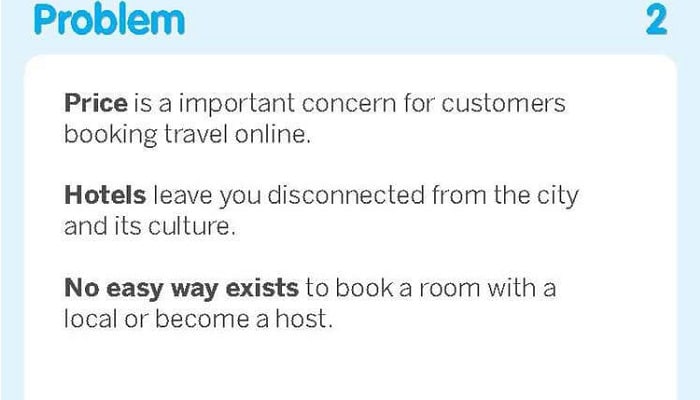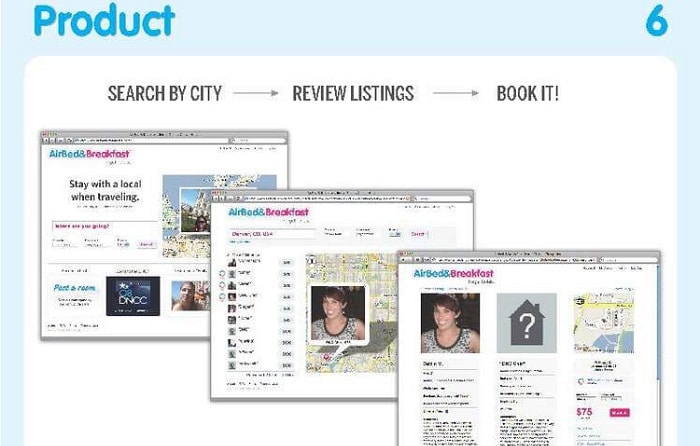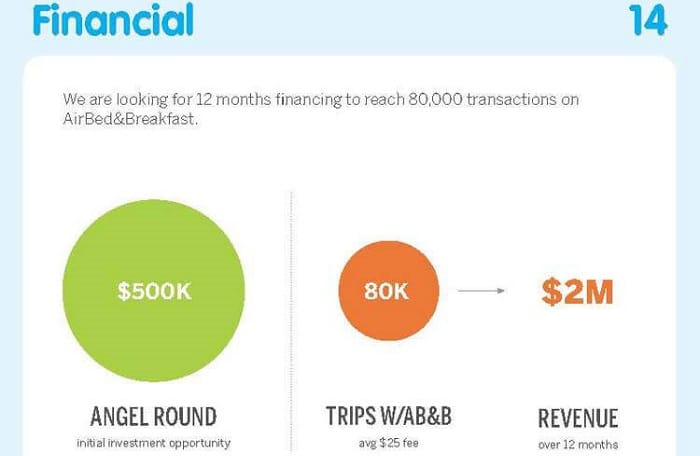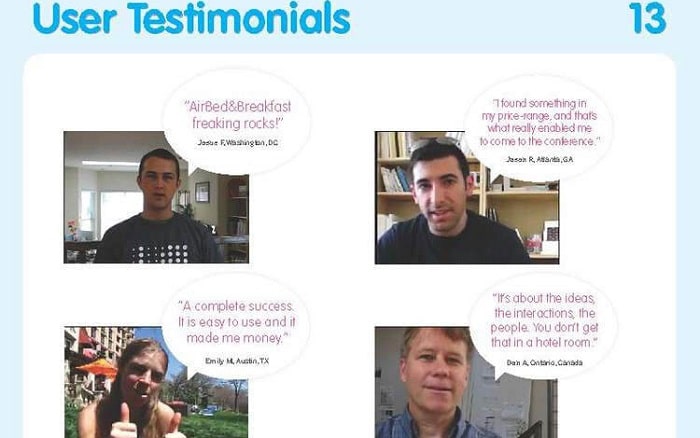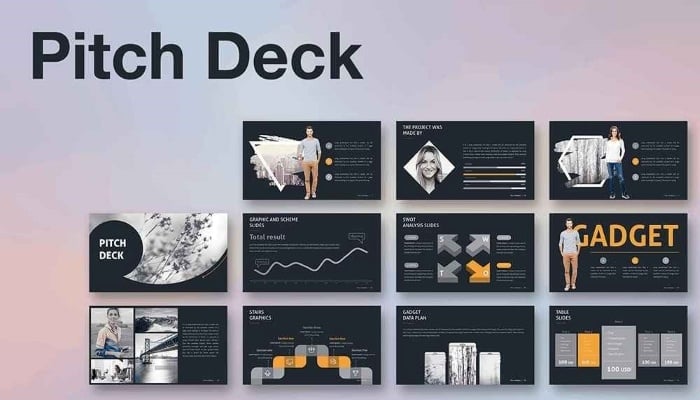Introduction to Designing a Pitch Deck That Impresses Investors
Your pitch deck needs to do two things: hook investors fast and make them believe you’ve got the next big thing. Start with the problem statement, make it relatable. Then show how your solution’s different to the ones in the market (and why people will pay for it).
Add real numbers: market size, sales growth, anything concrete. And don’t forget the team slide, investors bet on people, not just ideas. Keep the design simple but sharp: no tiny text, no rainbow colors. If your slides look like an amateur made them, they’ll assume your business does too. By doing it this you can get investors more engaged during pitches, and make sure they are more likely to give your business the funding and support it needs.
| Component | Description |
| Problem Statement | Clearly defines the issue your product or service aims to solve. |
| Solution | Demonstrates how your product or service addresses the problem effectively. |
| Market Opportunity | Identifies the target market, its size, and potential for growth. |
| Business Model | Explains how the business will generate revenue and sustain itself. |
| Traction | Shows evidence of progress or early success (e.g., customer acquisition, sales). |
| Financial Projections | Provides realistic forecasts of revenue, expenses, and profits. |
| Team Introduction | Highlights the key team members and their relevant expertise. |
| Design & Presentation | Ensures the deck is visually engaging and professional, aiding in clear communication. |
Your pitch deck is the golden ticket to capturing the investors’ attention and to show them that your idea is worth their time and money. In this competitive, frenetic world of startup and business ventures, the determining factor for the success or failure of any startup has to be financing. Now, the big question will be: how to make your pitch deck unique and actually impressive to prospective investors? The comprehensive guide will take you through what goes into a pitch deck, design tips to enhance its visual appeal, and ways to avoid common pitfalls.
If you don’t know what a pitch deck is, read the article. A pitch deck is a compact presentation that summarizes your business plan, usually intended to attract investors to fund your startup. Having an awesome idea itself is not enough; you need to learn how to present that idea convincingly. A well-structured pitch deck will make all the difference in securing the funding one needs or leaving empty-handed.
Key elements of an effective pitch deck include:
1. A compelling problem statement
2. An innovative solution
3. A clear market opportunity
4. A solid business model
5. Demonstrated traction
6. Realistic financial projections
7. A strong team introduction
Each of these elements will be used to tell your story and make a case for investment, but beyond the content, design and presentation of your pitch deck are equally as important. A good-looking and well-structured pitch deck can elevate your message and help hold investors’ attention through your presentation.
In this Article, we are going to take an in-depth look into each of these elements, explore design strategies to make your pitch deck stand out, and give examples of successful pitch decks that have helped companies raise millions. Whether you are a first-time entrepreneur or a seasoned business professional, this guide will take you through constructing a pitch deck that will impress investors and improve your chances of securing the funding you need to turn your vision into reality.
At Do My PowerPoint, our team of experts will help you in designing a pitch deck which looks stunning and is sound enough strategically to impress investors. Don’t risk your funding chances; make investors remember you with one striking impression!
Understanding the Purpose of a Pitch Deck
A pitch deck is a strategic presentation with five core objectives:
Capture Attention
Your first slide has to stand out amongst thousands of proposals that investors review. Make an instant impact that forces them to read on.
Tell Your Story
Get beyond data points to convey your company’s narrative. Address who you are, what problem you are trying to solve, and why it matters in the market.
Show Growth Potential
Investors look for scalable opportunities. Present clear evidence of how your business is positioned to expand and capture market share.
Establish Credibility
Build trust through concrete elements:
• Team expertise and track record
• Current market traction
• Conservative, data-backed projections
Drive Next Steps
Your pitch deck opens the door to deeper discussions. Include enough compelling information to generate questions while maintaining focus on key points.
Knowing these basics will help you create a pitch deck that clearly communicates your value proposition. Let’s take a look at the key elements that make up a great presentation.
Essential Components of an Impressive Pitch Deck
A standard pitch deck would contain a number of key components. Let’s go through each one of them and understand why they are important to impress the investors:
Problem Statement
This problem statement is the cornerstone of your pitch. Your whole presentation gets framed on the articulation of an issue that your business would solve.
Key aspects of an effective problem statement:
• Clearly define the problem
• Explain why it’s important
• Justify it by citing data or statistics
• Relate it to the audience
Example:
“Did you know that 40% of the food produced in the United States gets wasted, while 1 in 8 Americans don’t have access to food? Our solution addresses this paradox.”
Solution
After introducing the problem, it is time to introduce your solution. This is where you introduce your product or service and how it addresses the problem you have identified.
Tips for presenting your solution:
• Keep it simple and easy to understand
• Highlight what is unique about your solution
• Use visuals or demos if possible
• Explain the benefits, not just the features
Market Opportunity
Investors want to know there’s a significant market for your product or service. This section should demonstrate the size and potential of your target market.
Elements to include:
• Total Addressable Market (TAM)
• Serviceable Addressable Market (SAM)
• Serviceable Obtainable Market (SOM)
• Market trends and growth projections
Consider using a table such as this to present this information clearly:
| Market Segment | Size | Growth Rate |
| TAM | $10B | 5% annually |
| SAM | $2B | 8% annually |
| SOM | $500M | 12% annually |
Watch this YouTube video by Mark-O-Insights™ about TAM, SAM, SOM. What do these mean and why are they useful to investors when assessing an investment opportunity?
Business Model
Your business model describes how you will make money. This section should very clearly detail your revenue streams and pricing strategy.
Key points to cover:
• Revenue sources
• Pricing strategy
• Customer acquisition costs
• Lifetime value of a customer
Traction
Traction is the progress you have made so far. This might include early customers, partnerships, or other metrics that prove your business is gaining momentum.
Examples of traction:
• Number of users or customers
• Revenue growth
• Key partnerships or contracts
• Press coverage or awards
Financial Projections
Investors want to know that you have realistic knowledge of your financial future. This section should contain projections for the next 3-5 years.
Key financial metrics to include:
• Revenue projections
• Expenses
• Profit margins
• Cash flow
• Break-even point
Team Introduction
Many times, the team behind an idea is just as important as the idea itself. Use this section to make a case for the expertise and experience of your key team members.
Tips for presenting your team:
• Focus on relevant experience and achievements
• Highlight any previous successful exits
• Include advisors or board members if applicable
• Use professional photos
Want to make a pitch deck that has all of the key elements with elegance and transparency? Let our team of Experts in Do My PowerPoint help you with creating this powerful narrative that showcases your business in the best light. Our presentation design services can support you in displaying your tricky information with aesthetic but comprehensible style for presenting to even the most unbending investors.
Designing Your Pitch Deck for Maximum Impact
While the content of your pitch deck is important, the design element plays an equally important role in your pitch deck through capturing and retaining the interest of investors. With a good pitch deck design you can develop a much more convincing message, provide digested information, and retain viewers for a long period of time.
Visual Consistency
Maintaining visual consistency in your pitch deck gives a professional feel and provides polish to your presentation:
1. Consistent Color Scheme: Pick colors that represent your brand and maintain those throughout the deck. No more than 3-4 main colors should be used to avoid a messy outlook.
2. Uniform Typography: Stick to 2-3 font families. Differentiate the headings and body through weight and size, but make sure they are replicated across the slides.
3. Consistent Layout: Employ a grid system through which elements will be uniformly aligned across slides. This sets order and makes them appear professional.
4. Recurring Visual Elements: Use the same icons, shapes, or other design elements throughout the deck to make it look cohesive.
Data Visualization
Data presentation is also a very important aspect in a pitch deck. A well-designed chart and graph can communicate complex information in one glance.
Some best practices for data visualization include:
• Choose the right type of chart type for your data. For example, bar charts are good for comparisons, while line charts are good for showing trends over time
• Use colors strategically to draw attention towards key data points
• Keep it simple – avoid 3D charts or excessive decorative elements
• Labeling and legend should be included where necessary
Engaging Storytelling
Your pitch deck is a well-told story about your business. Use design elements to enhance your narrative and guide the viewer through your presentation.
“The best pitch decks don’t feel like pitch decks. They feel like stories.”
Oren Jacob, CEO of PullString. Source: First Round Review
Effective storytelling techniques in design:
1. Use of Imagery: Use appropriate images and illustrations to supplement your speech and add some visual interest
2. Progressive Disclosure: Design your slides to disclose information progressively to create suspense and to maintain interest.
3. Visual Metaphors: Using visual metaphors to explain the most complex ideas in an understandable manner.
4. Consistent Theme: Create a recurring visual theme that is relevant to the business or industry to make the presentation memorable.
Just remember, as a rule, your design is there to support your message, not overwhelm it. Keep your design professional, clean, and within your brand identity.
Want to ensure your pitch deck design makes a lasting impression? The PowerPoint design services at Do My PowerPoint can help you create a visually stunning presentation that enhances your message and captivates your audience. From data visualization to engaging storytelling, we’ve got what it takes to make the difference in your pitch deck.
Pitch deck design cost is a vital factor to consider when you’re aiming to create a high-quality, attention-grabbing presentation. Make sure you plan accordingly to achieve the best balance of aesthetics and functionality in your pitch deck.
Common Mistakes to Avoid
A good pitch deck is as much about what you leave out as it is about what you put in. Following are a few common mistakes to avoid when creating your pitch deck:
1. Information Overload: Your audience will be overwhelmed if there is way too much on your slides. Focus on key points and use appendices for additional details.
2. Poor Visual Hierarchy: Make sure the most important points have high contrast and stand out on the slide. Use size, color, and placement to direct the viewer’s eye.
3. Inconsistent Branding: Your pitch deck needs to be on-brand with your company. The usage of different types of colors, fonts, or logos makes the presentation look very unprofessional.
4. Ignoring the Competition: Failing to address how your solution compares to existing alternatives can make investors skeptical. Have a realistic view about the competition and be forthright with your advantage.
5. Unrealistic Financial Projections: Very unrealistic financial projections will kill your credibility. Be realistic and prepared to defend your numbers.
6. Poor Quality Visuals: Using low-quality photos or poorly created graphs will ruin your message. Spend time creating good visualization.
7. Lack of Practice: A well-developed deck cannot save one without proper run-up. So, practice your presentation for confidence in smooth presentation and any subsequent fielding of questions.
8. Forgetting the Call to Action: Always end with a clear ask. What are you seeking from the investors? How much money is required for the business and for what purpose?
On our blog, we have written an in-depth article about the Pitch Deck Design Mistakes and how one can avoid those. This resource shares more information and tips that are important to give you all you may need on how to avoid such traps and make a better pitch deck.
Don’t let common mistakes derail your pitch. At Do My PowerPoint, we also understand these possible failures and are here to help you avoid them by offering a presentation redesign service for creating a pitch deck showcasing your business in the best light possible! This would give a really solid and professional impression to your would-be investors.
Examples of Successful Pitch Decks
studying successful pitch decks contains a lot of information on what does work in pitching to investors. Let’s talk about two of the most famous and effective pitch decks in startup history: Uber and Airbnb.
Uber Pitch Deck
The perfect example of how a simple and uncomplicated presentation can illustrate how game-changing the idea is would be Uber’s 2008 pitch deck used to raise the first $1.25M of an eventual $10M round.
Key strengths of Uber’s pitch deck:
1. Clear Problem Statement: The deck starts by clearly outlining the problems with the existing taxi industry.
2. Simple Solution: Uber has come up with a very simple solution, emphasizing the convenience and reliability of their service.
3. Market Size: The deck clearly outlines the size of the opportunity, focusing on the San Francisco market as a starting point.
4. Revenue Model: Explained in detail is how Uber would make money on each ride as part of the business.
5. Competitive Advantage: The deck shows how Uber offers better service compared to regular taxis and existing car services.
6. Future Vision: Presentation concludes with a graph showing expansion trajectory.
 Airbnb Pitch Deck
Airbnb Pitch Deck
Airbnb’s pitch deck from 2009 is another excellent example of how to present an idea to investors.
Standout features of Airbnb’s pitch deck:
1. Compelling Introduction: The deck starts with a strong statement about the problem Airbnb is solving.
2. Market Validation: Airbnb presents data on the growing trend of online bookings for travel accommodations.
3. Clear Value Proposition: How it works for Airbnb guest and host are explained easily in this deck.
4. Business Model: The revenue model is explained simply and clearly.
5. Traction: Even at such early stages of the company, they could showcase outstanding statistics about User Growth and Bookings Statistics.
6. Team: It presents the founding team and gives proof of relevant experience and skills.
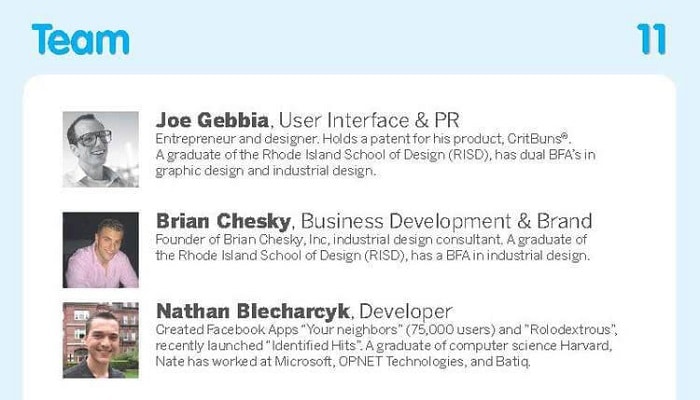
• They tell a compelling story about both of the problem and of its solution.
• Business models are transparent and well-explained.
• They show the potential for significant market disruption and growth.
• They have light, clean designs with minimal distractions from the content.
Looking at successful pitch decks may give you inspiration for your own, but remember that your pitch deck should be unique to your business and tailored to your specific audience.
Conclusion
A great pitch deck balances the art of strategic storytelling with data-driven content to win investor backing. Here are the key ingredients of successful pitch decks:
Your pitch deck should address the problem you’re solving, your solution, market size, business model, current traction, financial projections, and capabilities of your team.
Strong visual consistency and clear data visualization are way more important than decorative templates. Focus on the clean, readable presentation of information that highlights key metrics and growth potential.
Key Principles:
• Keep content focused and relevant
• Build a clear visual hierarchy
• Present realistic, well-researched projections
• Study successful decks from companies like Uber and Airbnb
• Refine based on feedback and practice delivery
Your pitch deck is an imperative chance to speak about your vision and potential as a business. A great presentation speaks of the understanding of your market and the ability to execute.
Transform Your Pitch Deck!
The team at Do My PowerPoint will help transform your business ideas into convincing presentations for investors. Our strategists and designers build clear, well-supported narratives—accompanied by professional visuals—at highly competitive rates.
Ready to create a pitch deck that secures funding? Click the link to see our rates and PowerPoint presentation price list!
Contact us today and let us help you build a pitch deck that opens the door and closes deals to fund your vision into a reality!

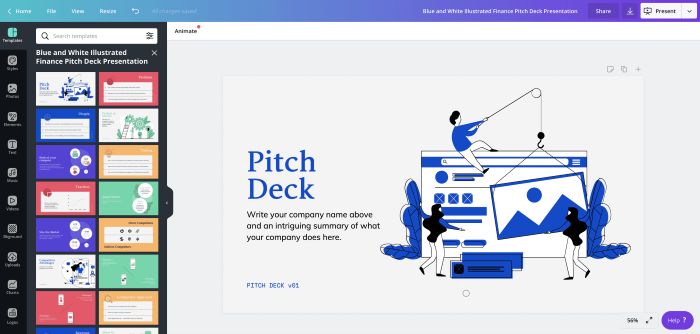
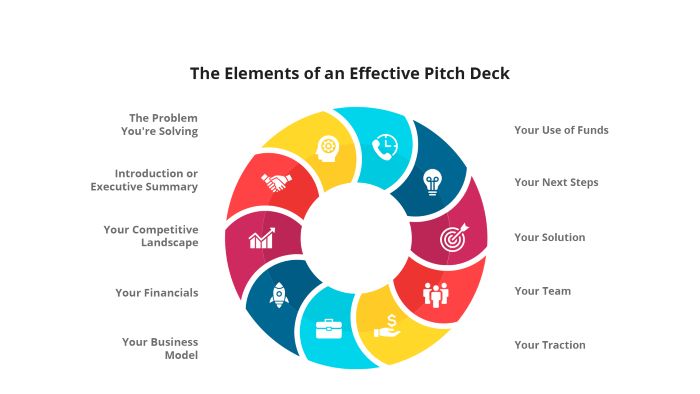
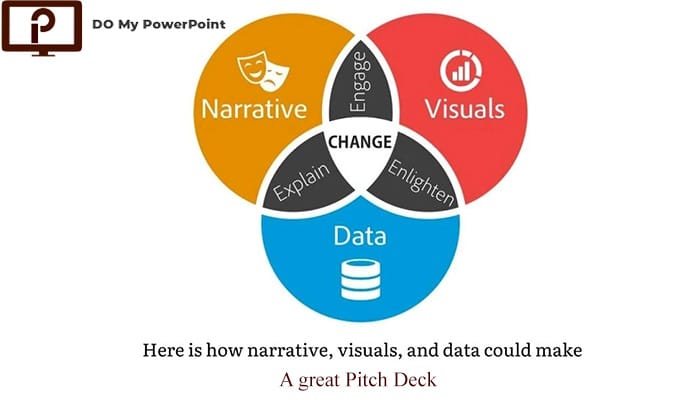


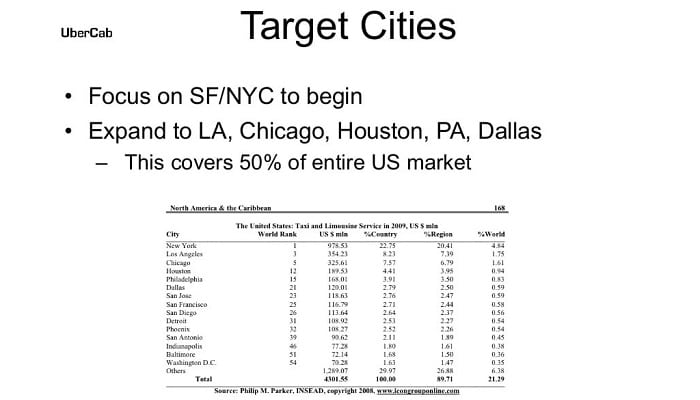
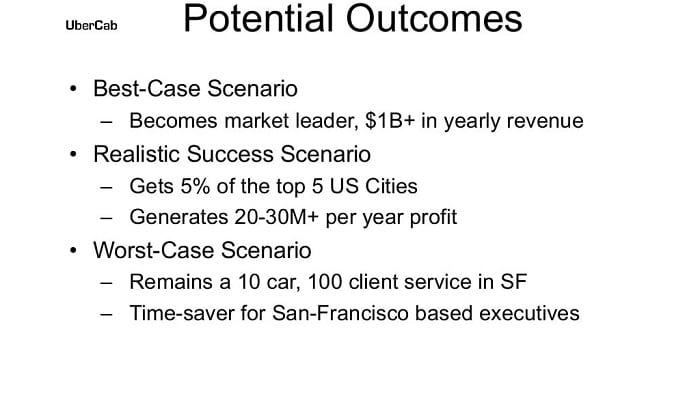

 Airbnb Pitch Deck
Airbnb Pitch Deck